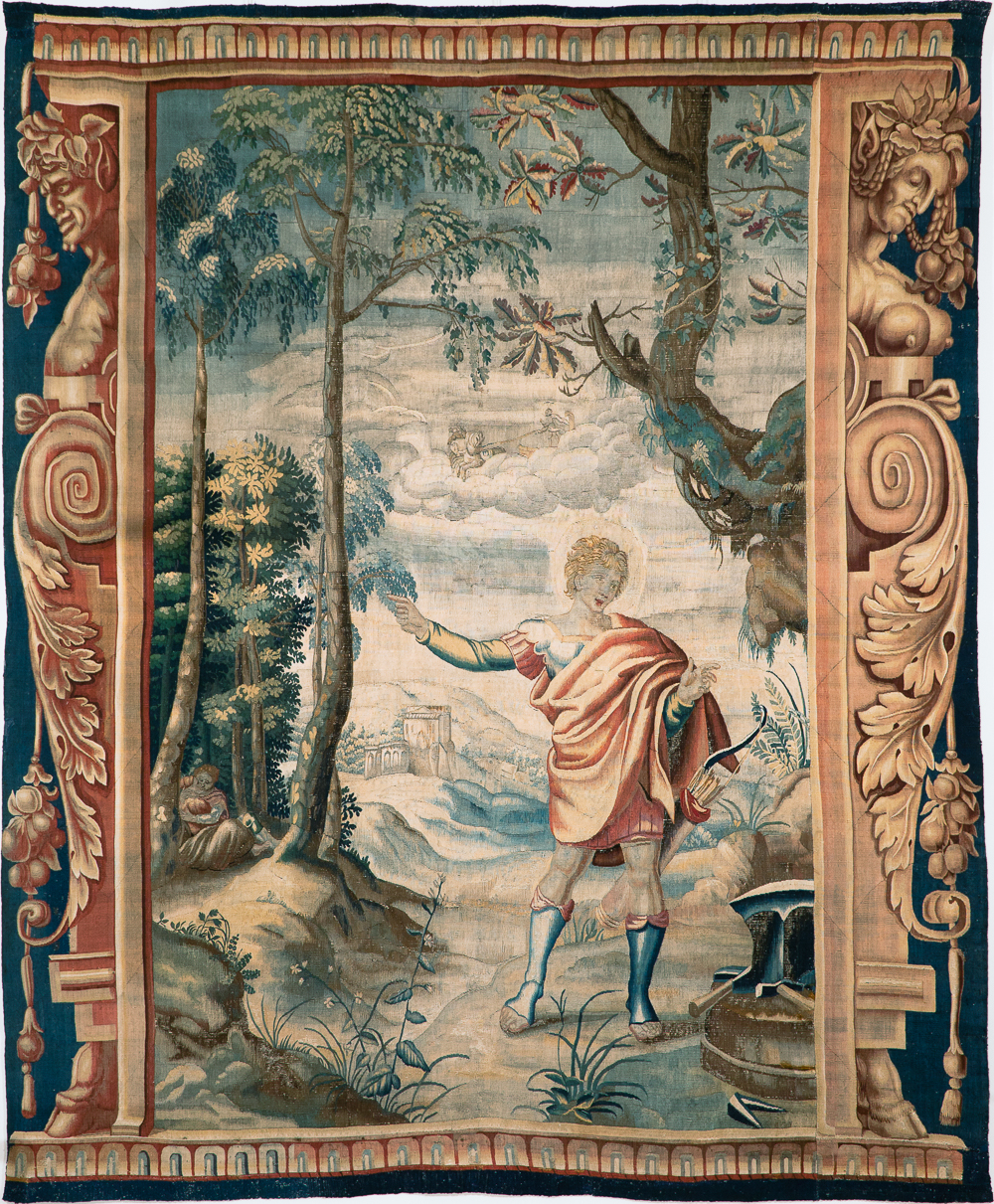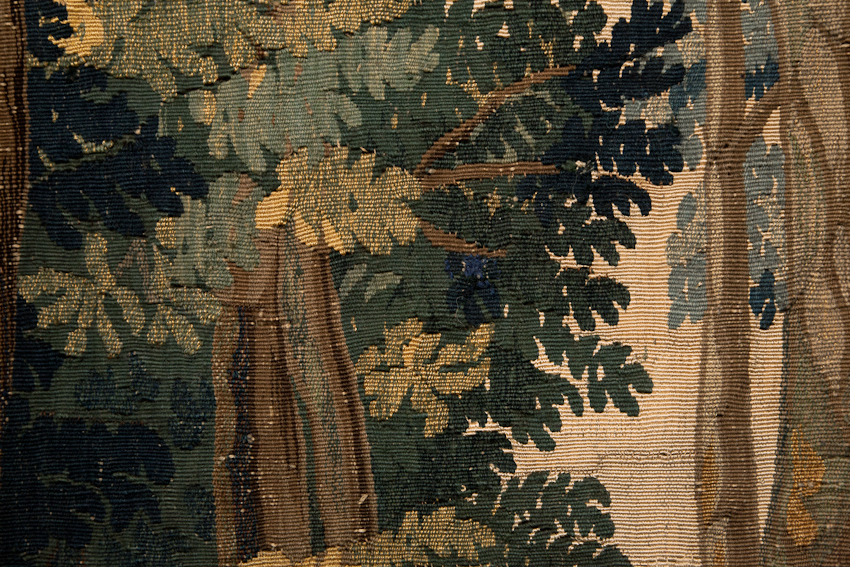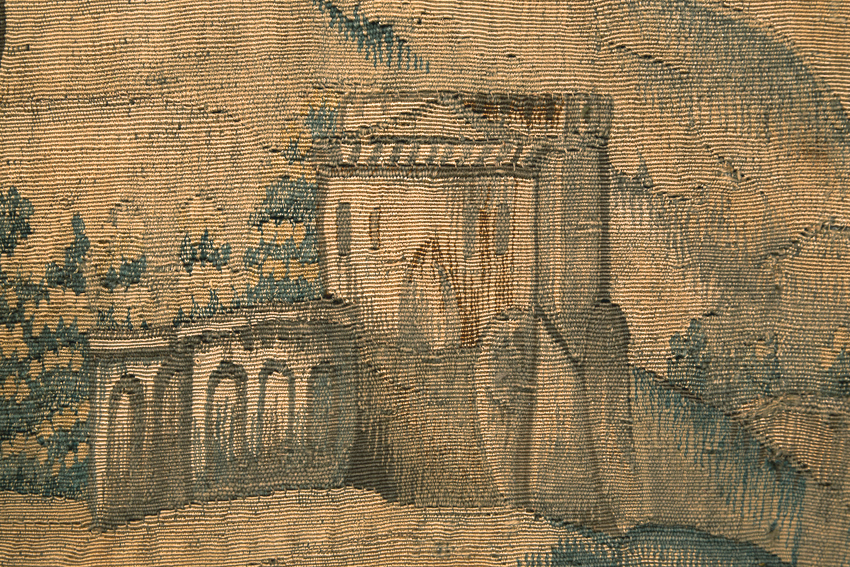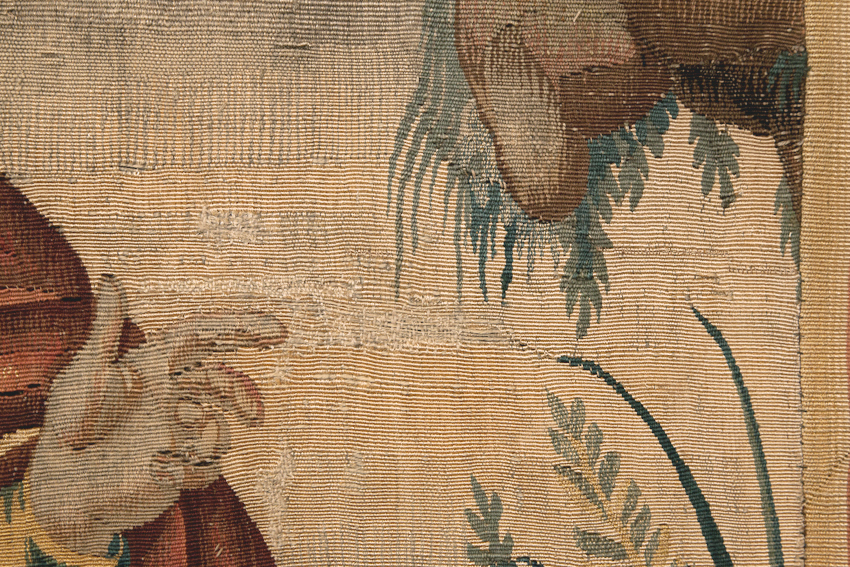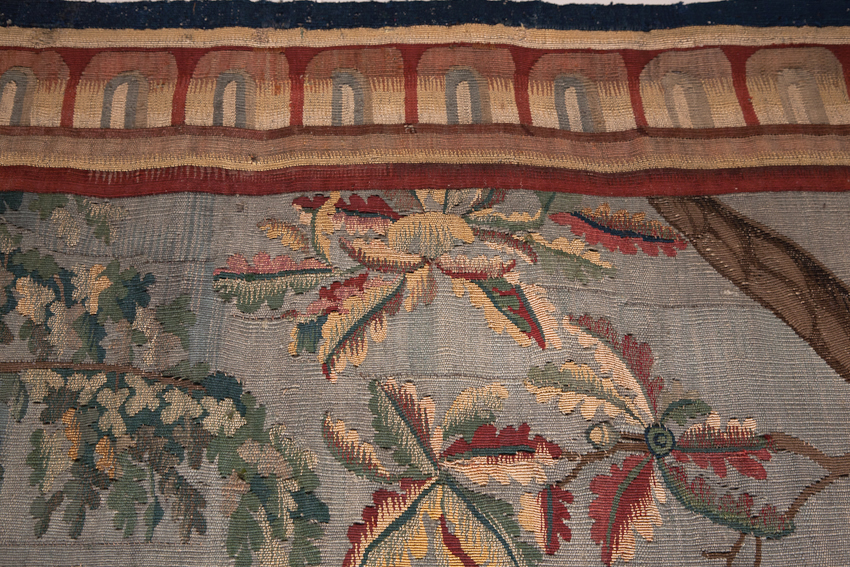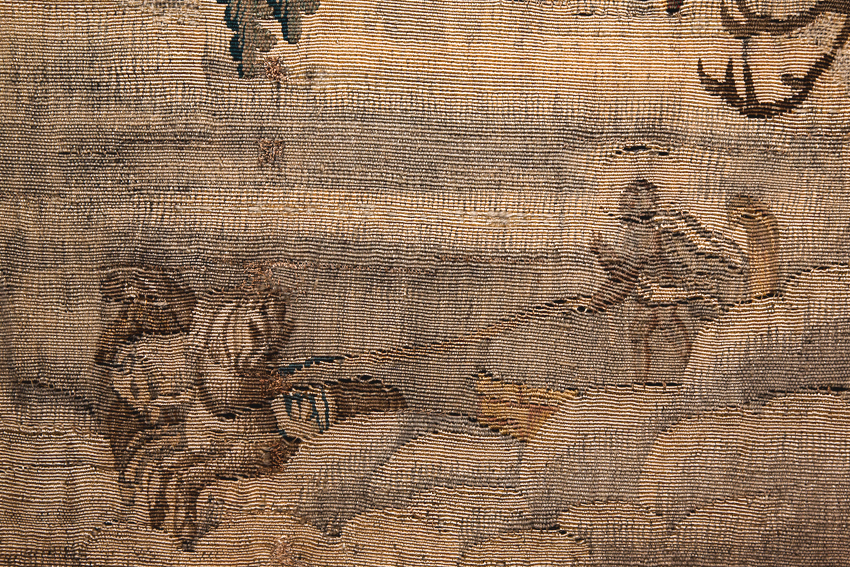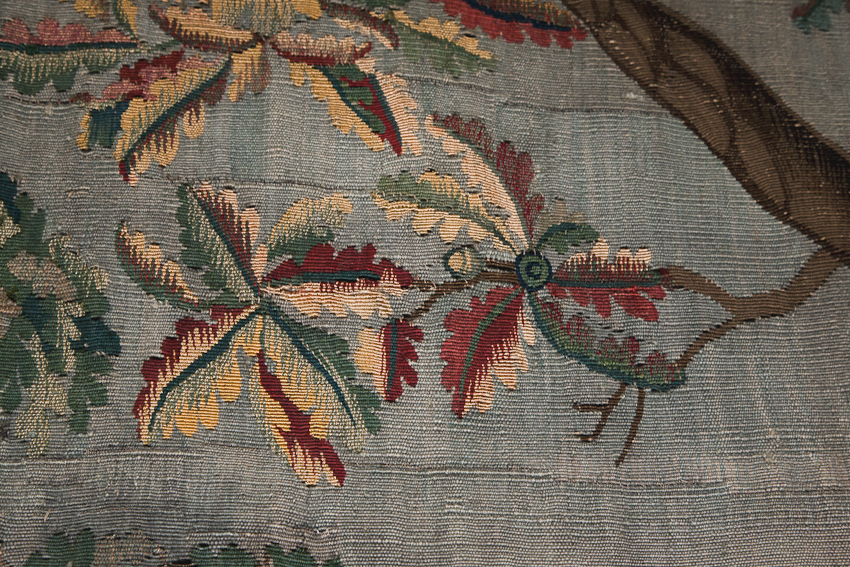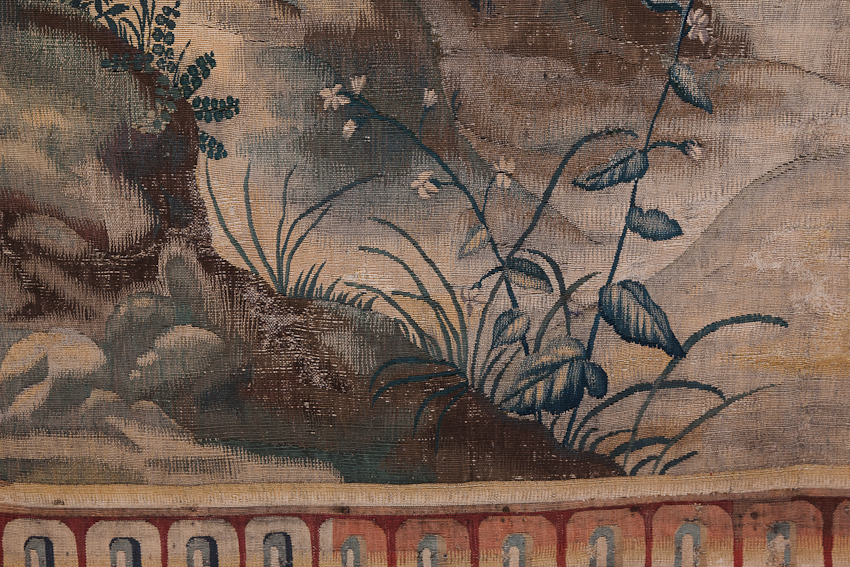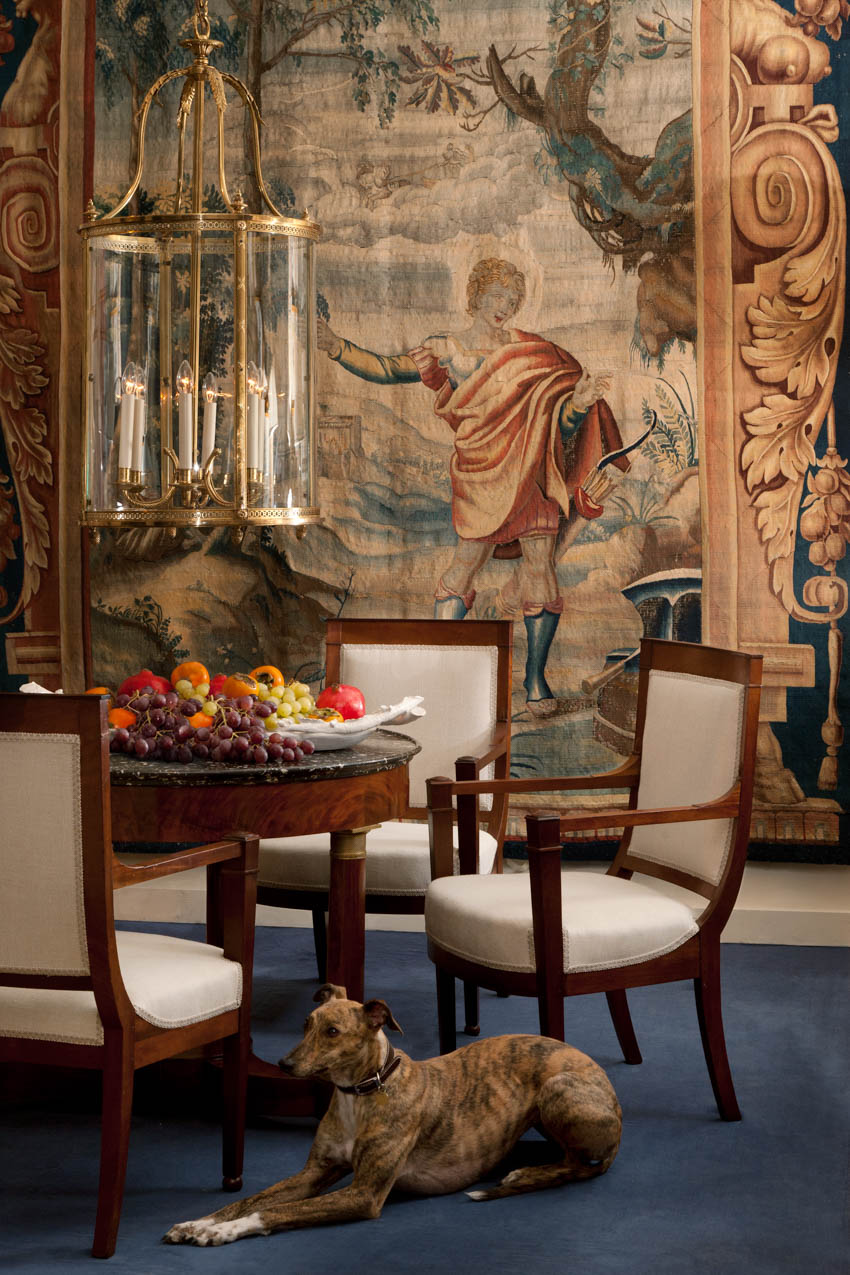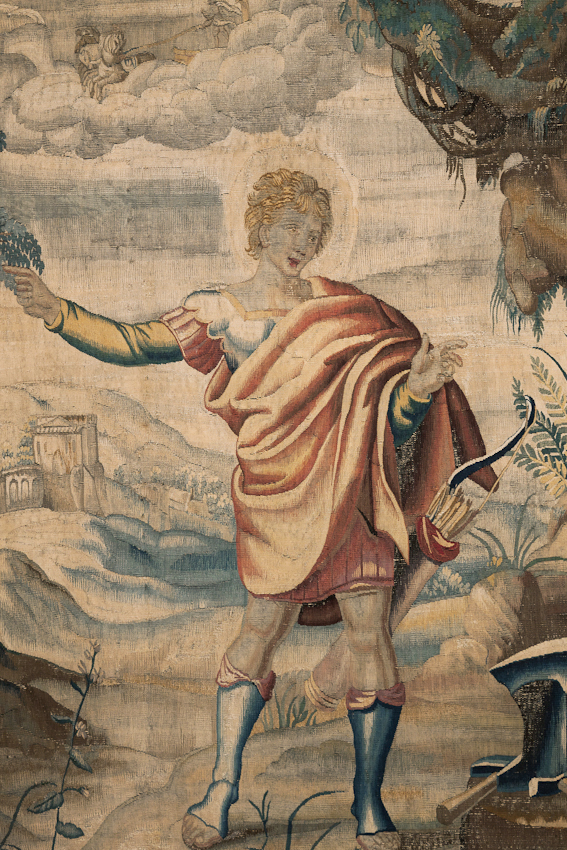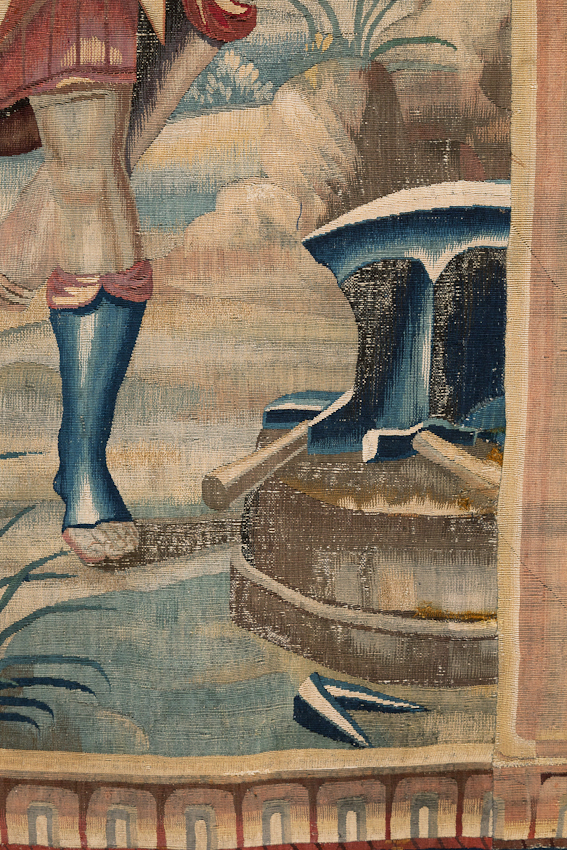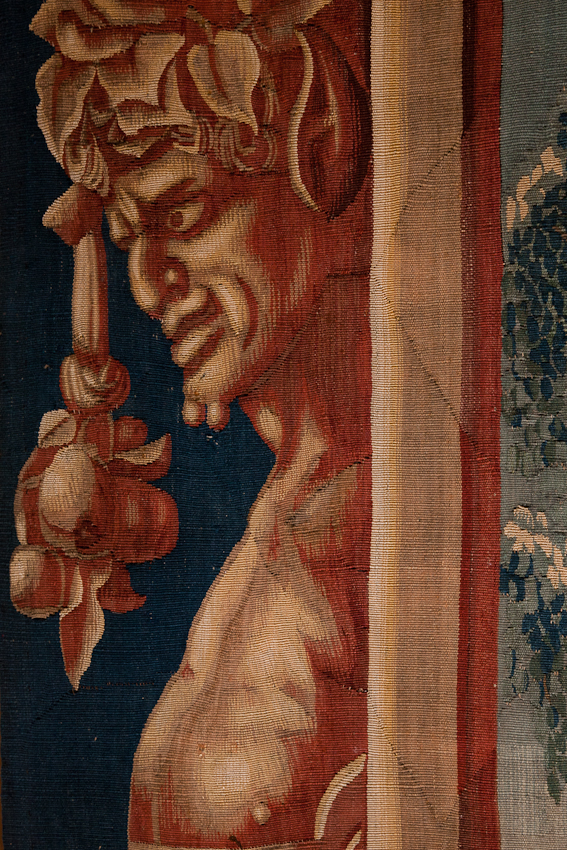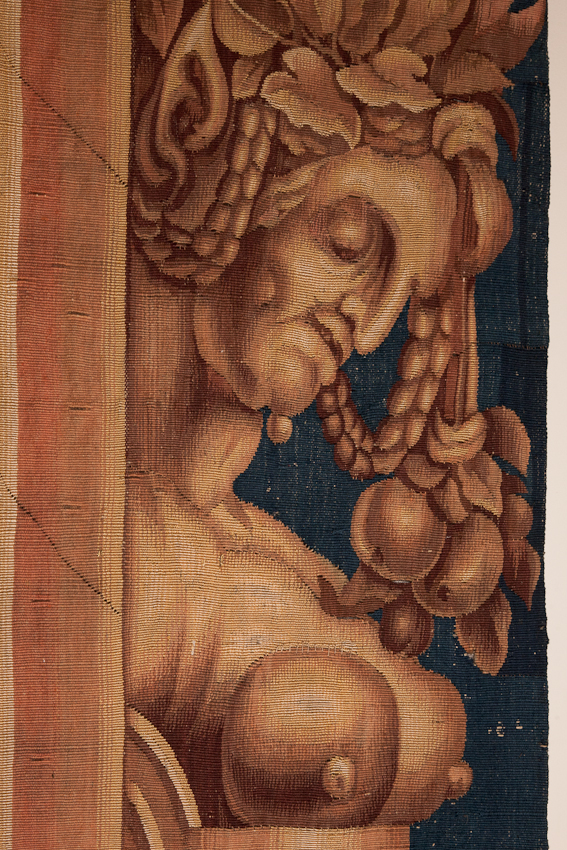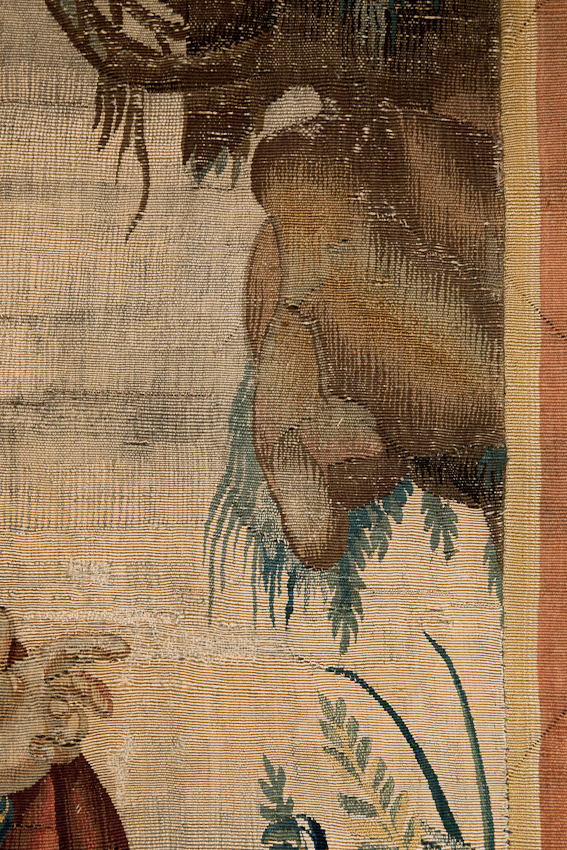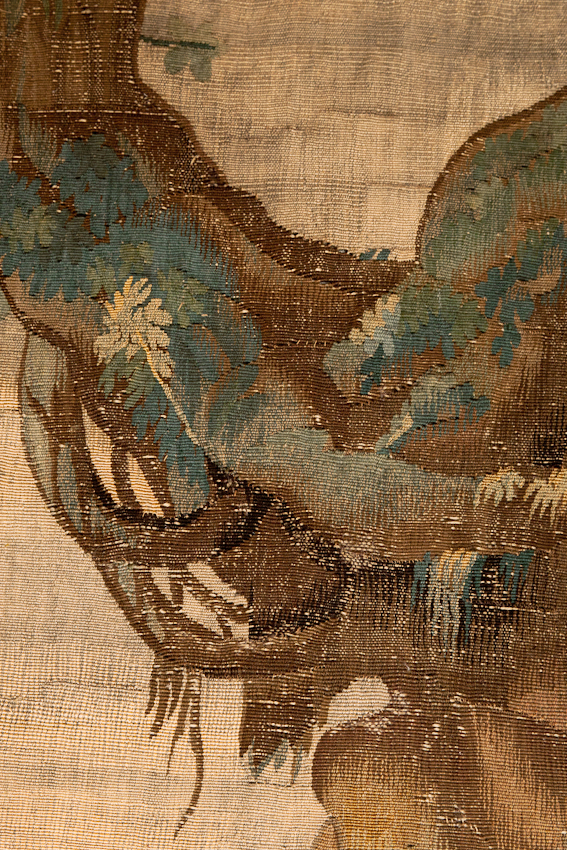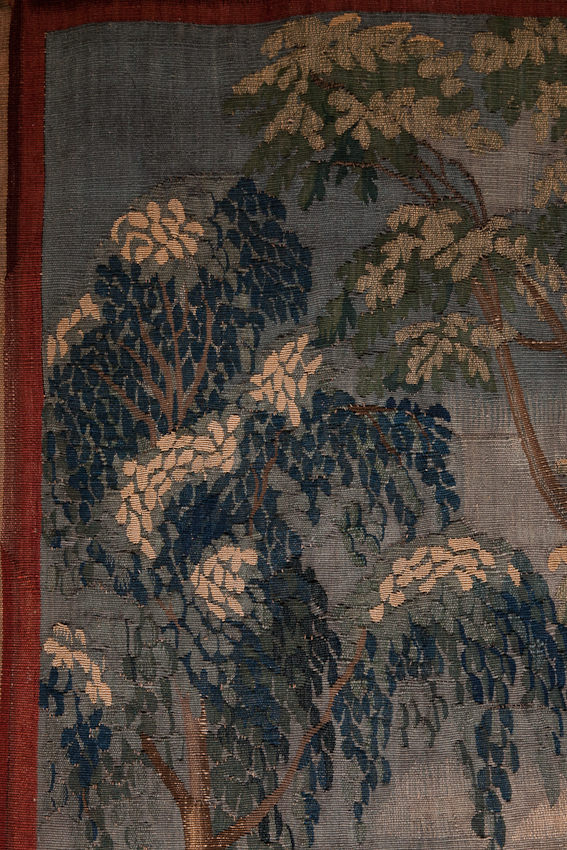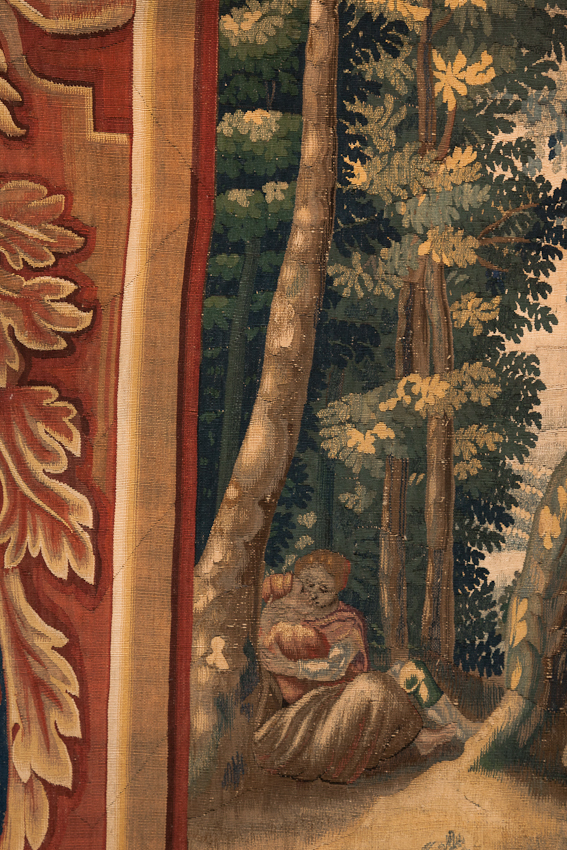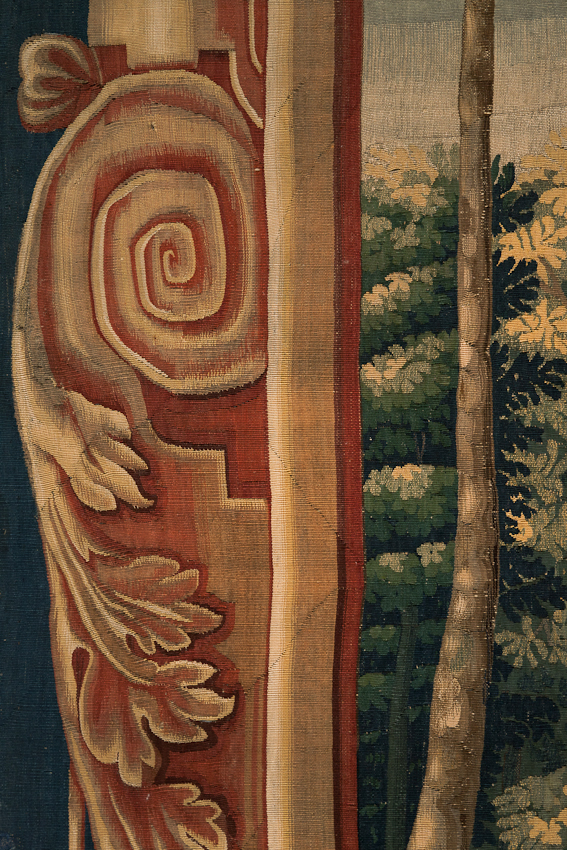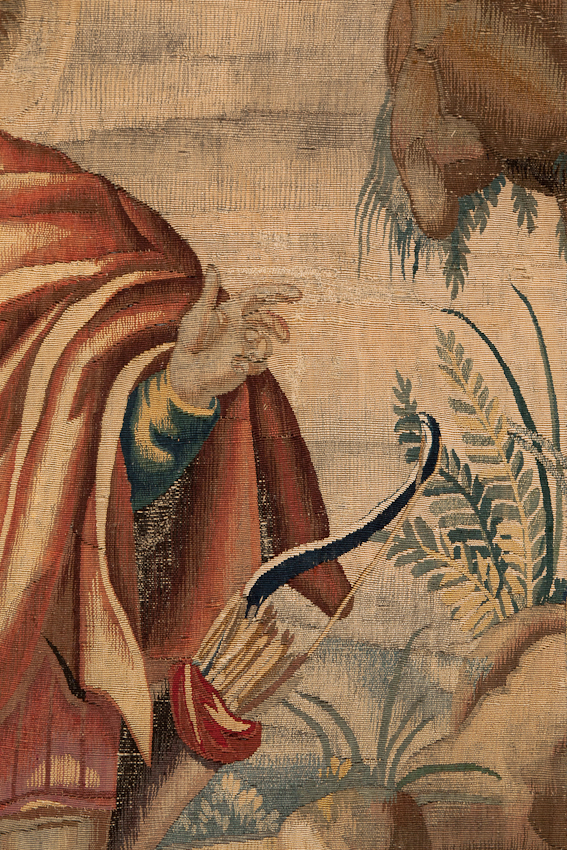|
The tapestry depicts Apollo at Vulcan’s forge, the moment when the god Apollo visits Vulcan and tells him that his wife Venus is having an affair with Mars the god of war. Apollo is shown wearing a red toga turning towards Vulcan who is not seen but his anvil and tools are depicted to the bottom right hand side of the tapestry. Venus and Mars are seen to the left in an embrace. Apollo’s chariot is shown in the clouds above his head.
Surrounded by a very distinctive architecturally composed border with side caryatid figures with the male satyr head and torso to the left and the female on the right. both supported upon exaggerated corbels with enveloping acanthus leaf, with pendant ribbon held fruit swags and architectural plinth base hoof feet, woven with a blue ground. The top and bottom horizontal borders having a cornice and architrave on a blue ground.
Woven in wools and silks from the series Venus and Vulcan, reduced in size. The tapestry has been cleaned and had minimal conservation it has been fully backed with linen.
From the Middle Ages until the late eighteenth century, the courts of Europe lavished vast expenditure on tapestries made in precious materials after designs by the leading artists of the day. Yet, the art history establishment continues to misrepresent this medium as a decorative art of lesser importance. Tapestry in the Baroque challenges this notion, demonstrating that tapestry remained among the most prestigious figurative media throughout the seventeenth and early eighteenth centuries.
In the 17th century important workshops were established at Mortlake on the River Thames, immediately attracting important commissions. From around 1620 Mortlake produced the greatest tapestries in Europe, including The Story of Vulcan and Venus, The Acts of the Apostles, The Elements, The Great Horses, The Hunters’ Chase, and The Story of Dido and Aeneas. Production was disrupted by the civil war but work was revived with the restoration of the monarchy when new workshops were established at Lambeth.
London continued to be an important centre with celebrated makers such as Thomas Poyntz (active 1677 – 1688), John Vanderbank (d1717), Joshua Morris, and William Bradshaw (d1775). In the 1750’s a short-lived venture was established at Fulham employing French carpet and tapestry weavers and some exquisite works were
produced. The industry declined in the second half of the 18th century.
HEIGHT: 10' (305 cm)
WIDTH: 8'6" (257 cm)
£POA
Please let us know if you would like to see this tapestry hanging in the shop. |
